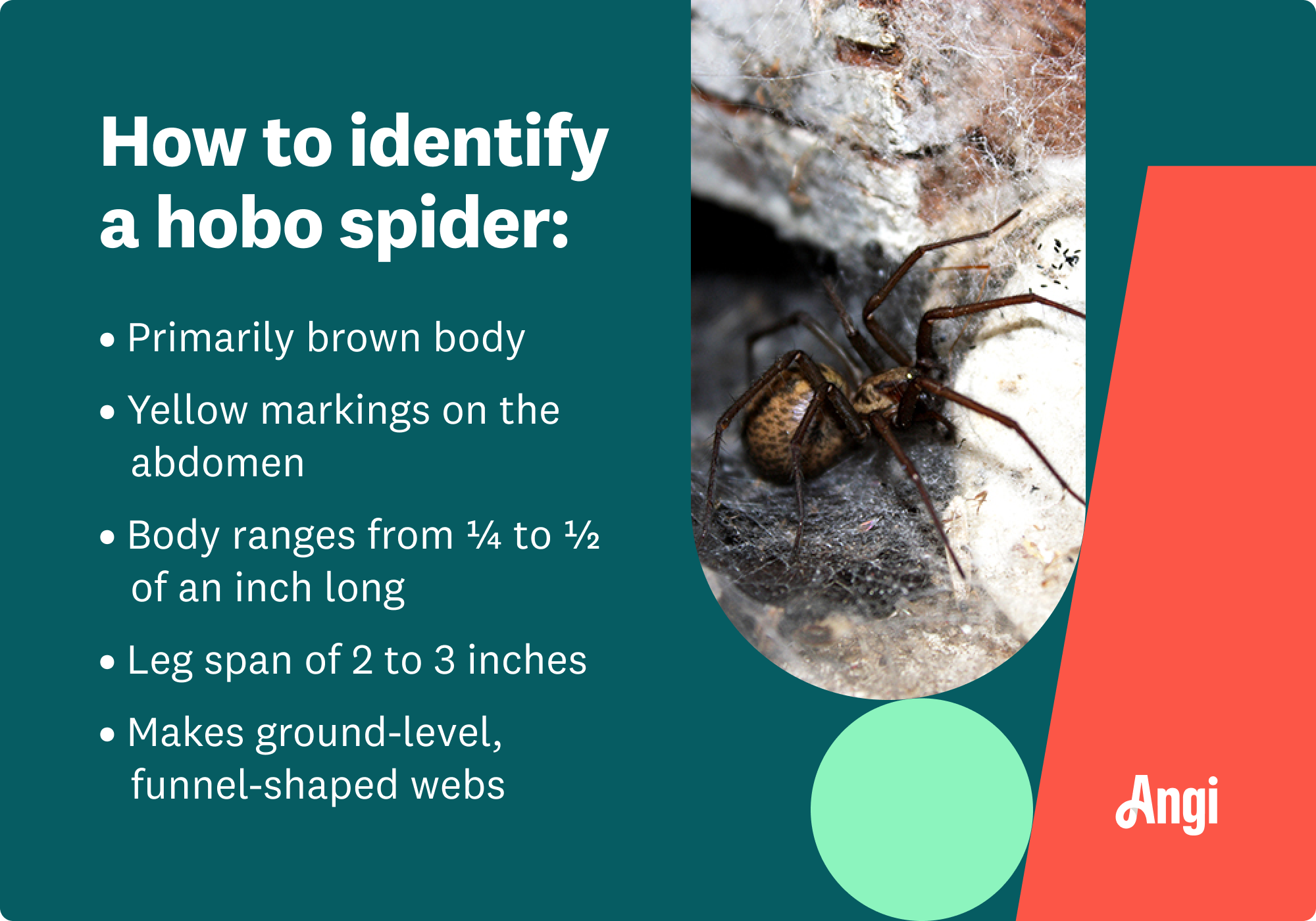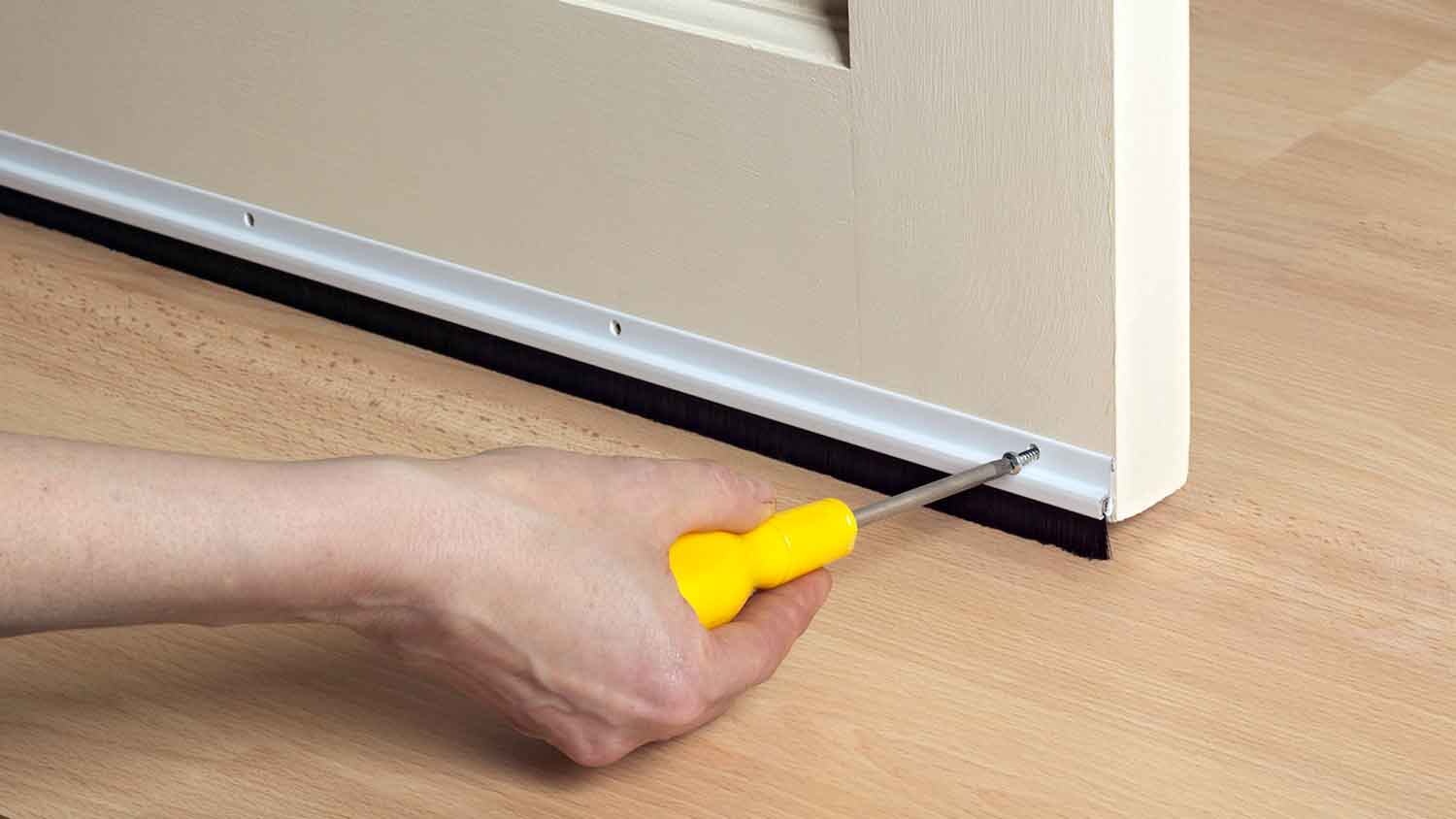
The average roach exterminator cost is between $100 and $600, depending on the species, infestation severity, and home size. Read on for a cost breakdown.
Send hobo spiders packing


Hobo spiders can create painful bites.
A funnel-shaped ground web is common.
Hobo spiders move fast and are hard to catch.
Vacuuming is an effective way to eliminate them.
Spiders evoke many emotions in people, typically related to fear or fascination. Either way, spiders are better outside your home than inside it—especially if your primary emotion is fear. This is especially true with the aggressive hobo spider, which can cause painful bites when someone stumbles upon a web. Once you learn how to identify a hobo spider, you can then take steps to eliminate it. Trust us: There are more effective means of removing hobo spiders than the bottom of a shoe.

Because hobo spiders look similar to some other spiders, it’s easy for homeowners to identify them incorrectly. Many people misidentify hobo spiders as common house, wolf, and brown recluse spiders.
In fact, it can be difficult to accurately identify a hobo spider without a close-up examination, including a magnifying glass.
While you may not want to get intimately close to the spider in question to identify it, a few basic tips can help you identify hobo spiders:
Hobo spiders have a small body, usually from 1/4–1/2 inch long. They appear much larger, though, because the stretch of the legs can span 2 to 3 inches.
The body shape resembles an oval, as hobo spiders’ bodies are slightly longer than wide. While many spiders have shiny legs or dark-colored bands on their legs, hobo spiders do not.
Hobo spiders are primarily brown, although they can have dark brown markings on the abdomen and head. They also have some yellow markings on the abdomen, the most distinctive coloring for this type of spider.

Hobo spiders build funnel-shaped webs along the ground or floor. When indoors, they often build them near small cracks, crevices, or holes in floors and floorboards. They then hide in the holes until prey becomes tangled in the web, quickly crawling out to bite the prey. Hobo spider webs are not sticky, as they are not trying to trap prey in the web.
Primarily, hobo spiders are in the Pacific Northwest in North America, including Oregon, Washington, Idaho, Montana, Utah, Alberta, and British Columbia. If you are seeing brown spiders similar in size to hobo spiders in other areas of North America, these almost certainly are a different type of spider.
For many years, hobo spider venom was thought to cause significant skin damage after a bite. However, misidentifying other spiders as hobo spiders probably led to this belief.
In reality, hobo spider venom is not typically dangerous for humans. However, it can cause:
Pain
Headache
Fatigue
Nausea
Welts
Hobo spiders are likely to bite when startled or when a person or a pet inadvertently brushes their ground-based web. This behavior makes them seem aggressive. Ultimately, it’s best to eliminate hobo spiders rather than risk being bitten.
Because of the location of their webs, using a vacuum to suck up the spider and web is an effective option. The webs aren’t sticky, meaning vacuums can handle them easily.
You can use a fly swatter, a rolled-up magazine, or even a shoe to crush hobo spiders. Then, use a feather duster or broom to sweep up the web.
Hobo spiders move quickly and are good at hiding inside small crevices, so it’s difficult for people to crush them.
If you prefer a non-lethal option for removing hobo spiders, you can catch them in a jar or glass and carry them outdoors. Because they move fast and are tough to catch, though, this can be a challenge.
Avoid trying to catch them in your hands, as they may bite you.

So what attracts spiders? They need a food source, so hobo spiders may move indoors if you have insects in an attic or basement.
They also attempt to move indoors as colder weather appears. Keep weather stripping and door sweeps in place to prevent hobo spiders from squeezing their way inside. Use caulk to block cracks in the foundation.
You also could try natural spider repellent options, including:
Cinnamon
Vinegar
Peppermint oil
Citrus oil
Ultimately, there is nothing wrong with accepting a spider exterminator cost to eliminate these pests. You don’t want a child or pet stumbling on a hobo spider web on the ground and suffering a bite. The pest control professional will take care of the problem for you efficiently.
An average pest control cost is about $175, but it varies depending on the infestation size and the type of pest. If you reach out to a local pest exterminator, many offer free quotes and estimates.
From average costs to expert advice, get all the answers you need to get your job done.

The average roach exterminator cost is between $100 and $600, depending on the species, infestation severity, and home size. Read on for a cost breakdown.

Whether you have bugs, bats, or rodents invading your home, you’ll want to contact an exterminator quickly. Find out how much pest control costs in Columbus, OH.

Keep your home free of termites and the damage they do. Learn more about inspections, infestations, and the average cost of termite treatments.

Pest control scams can cost you a lot of money. Get our tips for avoiding these scams and making sure you work with reputable exterminators.

No one wants wasps setting up shop in their yard but that doesn’t mean you should try to DIY their removal. Here are five reasons to leave wasp removal to the professionals.

From the hooded skunk to the Eastern spotted skunk, learn how to identify common types of skunks you may see in your backyard or digging through your trash.